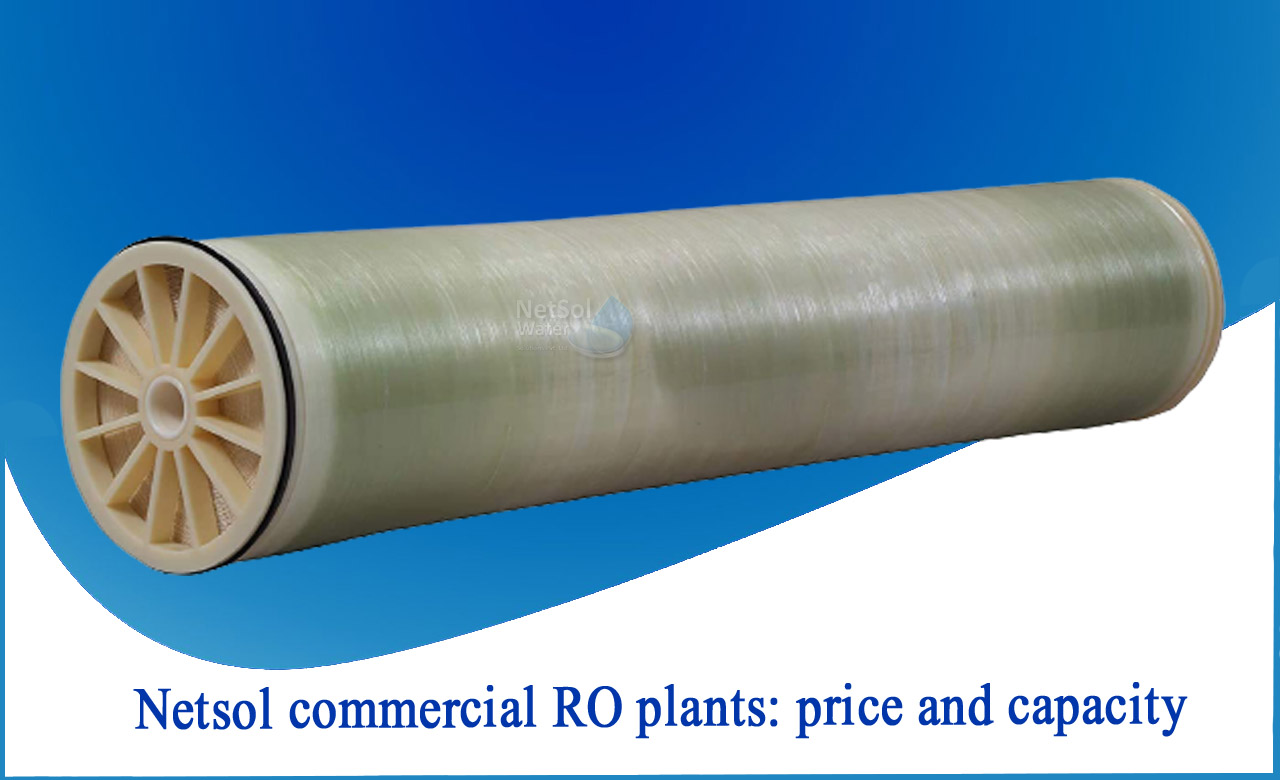What does a membrane mean in a water plant?
The membrane is a very thin plate made of a synthetic plastic material with very fine holes or pores. The size of the pores depends on the type of membrane used in the water filter. Membranes used in water filters are classified into microfiltration membrane MF, ultrafiltration membrane UF, nano-filtration membrane NF, and reverse osmosis RO membrane according to the pore size of the membrane.
The type of membrane used in the reverse osmosis RO water plant has the smallest pores and very small pores, so it is only slightly larger than the size of the water molecule, so pure water molecules can easily pass through. This stops the passage of larger salt molecules and organic chemicals. For example, the pore size of the RO membrane is 0.0005 microns, which is smaller than the size of the sodium chloride molecule, 0.0007 microns, and does not pass through. It also does not allow bacteria, viruses and organic molecules that are much larger than the RO pores to pass through.
Membrane is the best filter medium for water. Membranes used for water purification can be pore-sized to provide maximum efficiency for the task at hand. For example, to purify river water, very small pores are not needed, as is the case with reverse osmosis membranes. Reverse osmosis membranes require high pressure and therefore require a lot of energy to perform their work. Therefore, for low salinity water such as river water, it only removes bacteria and dirt in the water. The ideal membrane for such applications is the UF membrane. It uses very little energy and removes the smallest amount of virus and dirt particles
Reverse osmosis membranes remove almost all chemicals from water. Only water and molecules smaller than water molecules, such as CO2 gas, can pass through the RO membrane. Molecules smaller than water are generally harmless to health RO water is very pure and the quality is almost distilled water. Bottled water manufacturers typically use reverse osmosis filters to purify water.
Types of membrane according to structure:
Two common types of RO membranes are thin film composite (TFC or TFM) membranes and cellulose triacetate (CTA) membranes. The main differences between the two types are filtration capacity and chlorine resistance. Although CTA membranes are chlorine resistant, they are susceptible to bacterial contamination and remove only 93% of standard contaminants. TFC / TFM membranes eliminate an average of 98% of standard pollutants and are less susceptible to organic pollution but can only treat chlorine-free water. When cleaning chlorinated tap water, a carbon pre-treatment filter with a TFC / TFM membrane should be used. Brackish water, salt water, and brine membranes can be used for marine, industrial, and municipal desalination projects.
Types of membrane according to shape of membrane:
Membrane configurations vary, but most often spirally wound hollow fibre membranes are used. The quality and overall efficiency of the device depends on the type of membrane selected. This includes:
Suitable for low solids/liquids:
These membranes are made up of thousands of hollow fibres that resemble spaghetti and can be efficiently kept clean with occasional backwash and clean-in-place (CIP) techniques.
Plates and frames:
These membranes are placed inside a carrier plate in a plate-like structure that collects solids. They have a low packing density and may be less efficient than other filtration methods, but they are generally easier to use and easier to clean. Usually used for solutions that are difficult to filter. They are also among the lower cost membranes but higher cost systems.
Spiralwound:
Spiral wound membranes are among the commonly used. They are composed of flat sheets of membrane between mesh like spacers that are wound around a central tube (this tube collects the permeate after filtration) and placed within a casing. They are relatively compact and can be used in high-volume applications with low suspended solids.
Tubular:
Several tubelike membranes are placed within a pipe/shell, and as the stream is passed through the tubes, it transfers the permeate to the pipe/shell side. These can be less permeable at low packing densities and are commonly used for difficult streams: TDS, TSS, oil, fat, fatty ones.
Types of membrane according to filtration type:
1. Ultrafiltration
2. Nano-filtration
3. Reverse Osmosis



